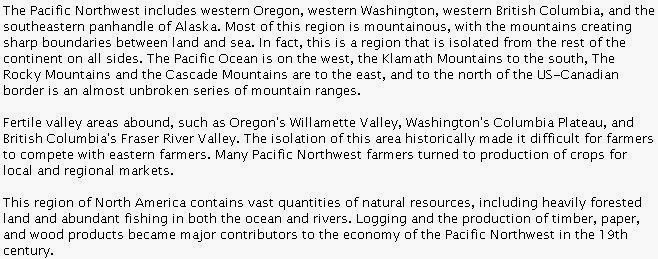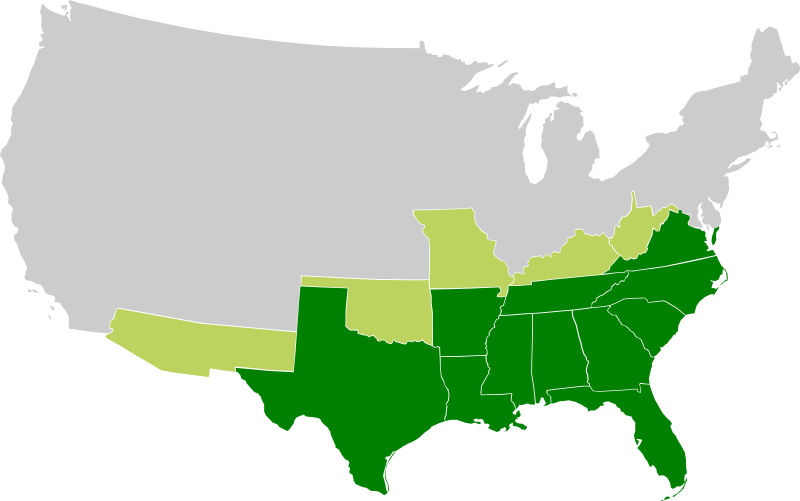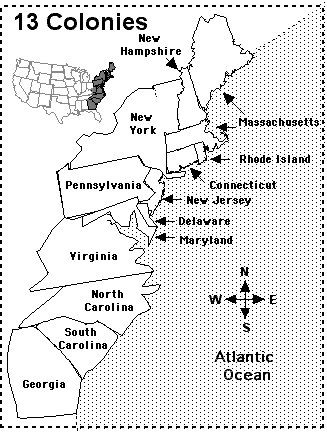Sunday, May 10, 2015
Saturday, May 9, 2015
Friday, March 20, 2015
Chapter 9 - The Inland South
New York is not part of the 'Inland South' since this region includes parts of Virginia, West Virginia, the Carolinas, Georgia,
Alabama, Tennessee, Kentucky, Mississippi, Arkansas, southern Missouri, northern
Louisiana, eastern Oklahoma, and East Texas.
Chapter 8 - The Great Lakes and Corn Belt
The millions of persons who settled the Great Lakes and Corn Belt region came from
many different origins. Natives of the Appalachians, such as Kentucky-born Abraham Lincoln,
moved north and west across the Ohio River. These “Butternut” settlers were soon outnumbered
by natives of New England, New York, and Pennsylvania who crossed the Alleghanies in search
of cheap, fertile farmland. They were joined by immigrants from England, Scotland, Ireland,
Wales, Germany, the Netherlands, and Scandinavia. Many Canadians who a generation or two
earlier had moved to Upper Canada returned to the United States, and were especially prevalent
in Michigan.(Hardwick, 153)
Most of the residents of the Great Lakes and Corn Belt in 1910 were of European ancestry. However, diversity in the region soon increased as African-Americans began to move to the region in large numbers after World War I. The movement of African-Americans from the South became a critical part of a new migration stream that dramatically changed the demographics and cultures of cities throughout the region. Between 1916 and 1920, some 500,000 African-Americans left the rural South for the industrial centers of Chicago, New York, Detroit, Cleveland, Philadelphia, St. Louis, and Kansas City in what was known as the “Great Migration.” Thousands more moved northward between the 1920s and the 1950s. These migrants were driven by both push factors and pull factors. Push factors are issues encouraging people to migrate away from their areas of origin. For Southern African Americans, these push factors included institutionalized racism and segregation, lynchings, beatings, crop failures, and limited educational and economic opportunities. Pull factors are issues encouraging migrants to select particular destinations. Pull factors in the industrial cities of the Great Lakes and Corn Belt included jobs at much higher wages than were prevalent in the South, along with a call to freedom and a much sought after opportunity for equality. (Hardwick, 154)
REFERENCE: The Geography of North America, Hardwick
Most of the residents of the Great Lakes and Corn Belt in 1910 were of European ancestry. However, diversity in the region soon increased as African-Americans began to move to the region in large numbers after World War I. The movement of African-Americans from the South became a critical part of a new migration stream that dramatically changed the demographics and cultures of cities throughout the region. Between 1916 and 1920, some 500,000 African-Americans left the rural South for the industrial centers of Chicago, New York, Detroit, Cleveland, Philadelphia, St. Louis, and Kansas City in what was known as the “Great Migration.” Thousands more moved northward between the 1920s and the 1950s. These migrants were driven by both push factors and pull factors. Push factors are issues encouraging people to migrate away from their areas of origin. For Southern African Americans, these push factors included institutionalized racism and segregation, lynchings, beatings, crop failures, and limited educational and economic opportunities. Pull factors are issues encouraging migrants to select particular destinations. Pull factors in the industrial cities of the Great Lakes and Corn Belt included jobs at much higher wages than were prevalent in the South, along with a call to freedom and a much sought after opportunity for equality. (Hardwick, 154)
REFERENCE: The Geography of North America, Hardwick
Chapter 7 - Megalopolis
New York city is part of the Northeast Megalopolis which is the most heavily urbanized region of the United States.
There is also a lot of ethnic diversity in the Megalopolis region. The demographics of New York City are evidence of a large and ethnically diverse metropolis. It is the largest city in the United States with a population defined by a long history of international immigration. New York City is home to more than 8 million people, accounting for about 40% of the population of New York State and a similar percentage of the New York metropolitan area, home to about 22 million. Over the last decade the city has been growing faster than the region. The New York region continues to be the leading metropolitan gateway for legal immigrants admitted into the United States.
REFERENCE: http://en.wikipedia.org/wiki/Northeast_megalopolis
Chapter 5 - The Atlantic Periphery
As I mentioned in Chapter 1 post, New York is part of the Atlantic Periphery (east), part also of the Megalopolis (major cities), and part of the Great Lakes/Corn Belt (west).
Lake Placid, a famous place for New Yorkers as a recreational spot is located in the Essex county. It hosted two Winter Olympics event in the past, 1932 and 1980.
Lake Placid, a famous place for New Yorkers as a recreational spot is located in the Essex county. It hosted two Winter Olympics event in the past, 1932 and 1980.
Lake Placid is well known among winter-sports enthusiasts for its skiing, both Alpine and Nordic. Whiteface Mountain (4,867 ft or 1,483 m), in nearby Wilmington about 13 miles (21 km) from Lake Placid, offers skiing, hiking, gondola rides, and mountain biking, and is the only one of the High Peaks that can be reached via an auto road. Whiteface Mountain has a vertical elevation of 3,430 feet (1045.464m), the highest vertical elevation of mountains in Eastern North America. The area has one of only sixteen bobsled runs in the western hemisphere, and is one of the few places in the contiguous United States which offers dogsled and sleigh rides
REFERENCE: http://en.wikipedia.org/wiki/Lake_Placid,_New_York
Chapter 4 - The North American Political Economy
The economy of New York City is the biggest regional economy in the United States and the second largest city economy in the world. Anchored by Wall Street, in Lower Manhattan, New York City is one of the world's two premier financial centers, alongside London and is home to the New York Stock Exchange and NASDAQ, the world's largest stock exchanges by market capitalization and trading activity. New York is distinctive for its high concentrations of advanced service sector firms in fields such as law, accountancy, banking and management consultancy.
The financial, insurance, health care, and real estate industries form the basis of New York's economy. The city is also the most important center for mass media, journalism and publishing in the United States, and is the preeminent arts center in the country. Creative industries such as new media, advertising, fashion, design and architecture account for a growing share of employment, with New York City possessing a strong competitive advantage in these industries. Manufacturing, although declining, remains consequential.
The New York Stock Exchange is by far the largest stock exchange in the world by market capitalization of listed companies. The NASDAQ electronic exchange has the most companies listed and is second largest in the world by market capitalization of listed companies.
The New York metropolitan area had an estimated gross metropolitan product of $1.28 trillion in 2010,. The city's economy accounts for the majority of the economic activity in the states of New York and New Jersey
REFERENCE: http://en.wikipedia.org/wiki/Economy_of_New_York_City
The financial, insurance, health care, and real estate industries form the basis of New York's economy. The city is also the most important center for mass media, journalism and publishing in the United States, and is the preeminent arts center in the country. Creative industries such as new media, advertising, fashion, design and architecture account for a growing share of employment, with New York City possessing a strong competitive advantage in these industries. Manufacturing, although declining, remains consequential.
The New York Stock Exchange is by far the largest stock exchange in the world by market capitalization of listed companies. The NASDAQ electronic exchange has the most companies listed and is second largest in the world by market capitalization of listed companies.
The New York metropolitan area had an estimated gross metropolitan product of $1.28 trillion in 2010,. The city's economy accounts for the majority of the economic activity in the states of New York and New Jersey
REFERENCE: http://en.wikipedia.org/wiki/Economy_of_New_York_City
Chapter 3 - Historical Settlement of North America
On April 4, 1609, Henry Hudson, an English explorer in the employ of the Dutch East India Company, departed Amsterdam in command of the ship Halve Maen. On September 3 he reached the estuary of the river that initially was called the "Mauritius" and now carries his name. He was not the first to discover the estuary, though, as it had been known since the voyage of Giovanni da Verrazzano in 1524. Hudson sailed into the upper bay on September 11, and the following day began a journey up what is now known as the Hudson River. Over the next ten days his ship ascended the river, reaching a point about where the present-day capital of Albany is located. While exploring the river, Hudson had traded with several native groups, mainly obtaining furs. His voyage was used to establish Dutch claims to the region and to the fur trade that prospered there when a trading post was established at Albany in 1614.
In 1540 French traders from New France built a chateau on Castle Island, but due to flooding it was abandoned the next year. In 1614, the Dutch under the command of Hendrick Corstiaensen, rebuilt the French chateau, which they called Fort Nassau. Fort Nassau was the first Dutch settlement in North America, and was located along the Hudson River in present-day Albany. The fort was a small fortification which served as a trading post and warehouse. Located on the Hudson River flood plain, the rudimentary "fort" was washed away by flooding in 1617, and abandoned for good when Fort Orange (New Netherland) was built in 1623.
A surprise attack with overwhelming force allowed the English to conquer New Netherlands in 1664; lenient terms of surrender most likely kept local resistance to a minimum. The colony and city were both renamed New York (and "Beverwijck" was renamed Albany) after its new proprietor, James II of England, who was the Duke of York and Duke of Albany at the time. The population of New Netherland at the time of English takeover was 7,000–8,000.
REFERENCE: http://en.wikipedia.org/wiki/History_of_New_York#Dutch_and_British_colonial_period
Wednesday, March 18, 2015
Chapter 2 - North America's Environmental Setting
New York
Soil Weather and Climate
New York weather is very changeable with moderate precipitation all over
the year, and some heat waves in summer and very cool weather in winter and
even in the early spring. Snow is concentrated in winter months.
For many people summer should be avoided. Humidity and high temperatures may
turn July and August into very uncomfortable months. But, contradictory, these
are also the most visited months for New York.
What's the best time to travel to New York in United States of
America? Here are some facts:
REFERENCE: http://www.weather-and-climate.com/average-monthly-Rainfall-Temperature-Sunshine,New-York,United-States-of-America
New York
Soil Types
Alfisols
Entisols
Histosols
Inceptisols
Ultisols
Spodosols
REFERENCE : http://www.ehow.com/info_8416204_new-york-soil-types.html
New York Soil Weather and Climate
For many people summer should be avoided. Humidity and high temperatures may turn July and August into very uncomfortable months. But, contradictory, these are also the most visited months for New York.
What's the best time to travel to New York in United States of America? Here are some facts:
Entisols
Inceptisols
Ultisols
Spodosols
REFERENCE : http://www.ehow.com/info_8416204_new-york-soil-types.html
Saturday, March 14, 2015
Chapter 1 - Introduction
Based from this book we use for our Geography 321 book, North America is divided by thematic geography from chapters two to four, then by regional geography from five to eighteen.
According to the book, New York is part of the Atlantic Periphery (east), part also of the Megalopolis (major cities), and part of the Great Lakes/Corn Belt (west).
| Megalopolis |
Joel Garreau's region of North America are also used in this book. According to Garreau, New York is part of the New England region.
 |
| Garreau's New England region |
Times Square
A friend of mine from Queens recommended to start my visit at Times Square. Although finding hotel at that proximity would be expensive. He recommended finding a hotel at Queens area and just purchasing subway tickets that is 30 minutes away from Times Square.
First Time Visit
Spring Break is almost here. For the first time my wife and I are planning to visit New York. For starters, we are planning on shopping and food hopping. This blog, will serve as my research place, or a collection of ideas and places to visit.
Subscribe to:
Comments (Atom)






















